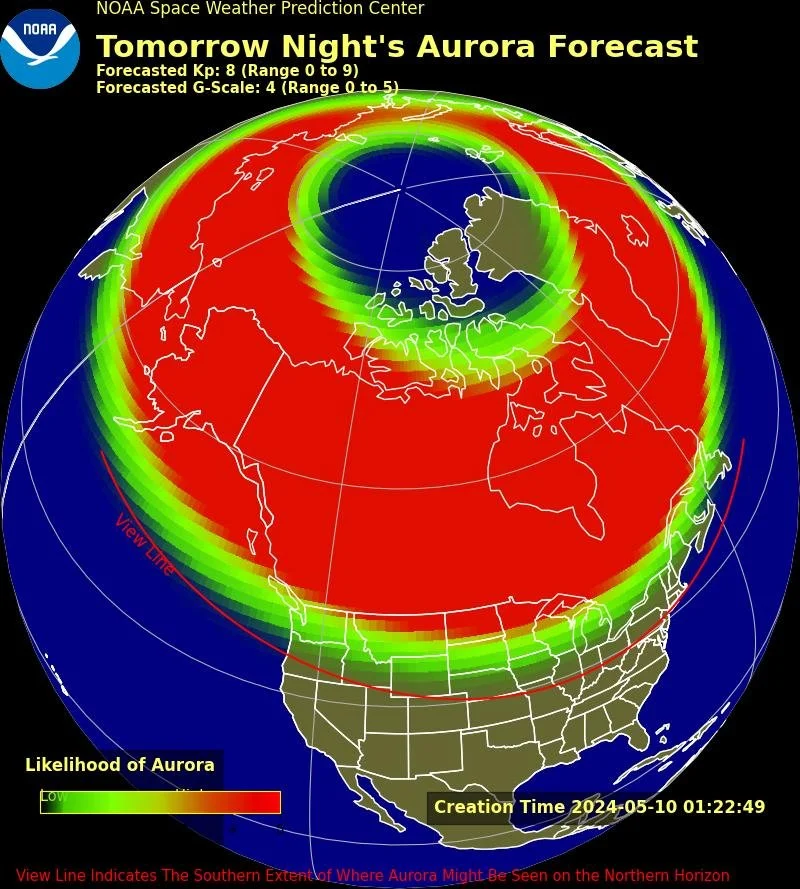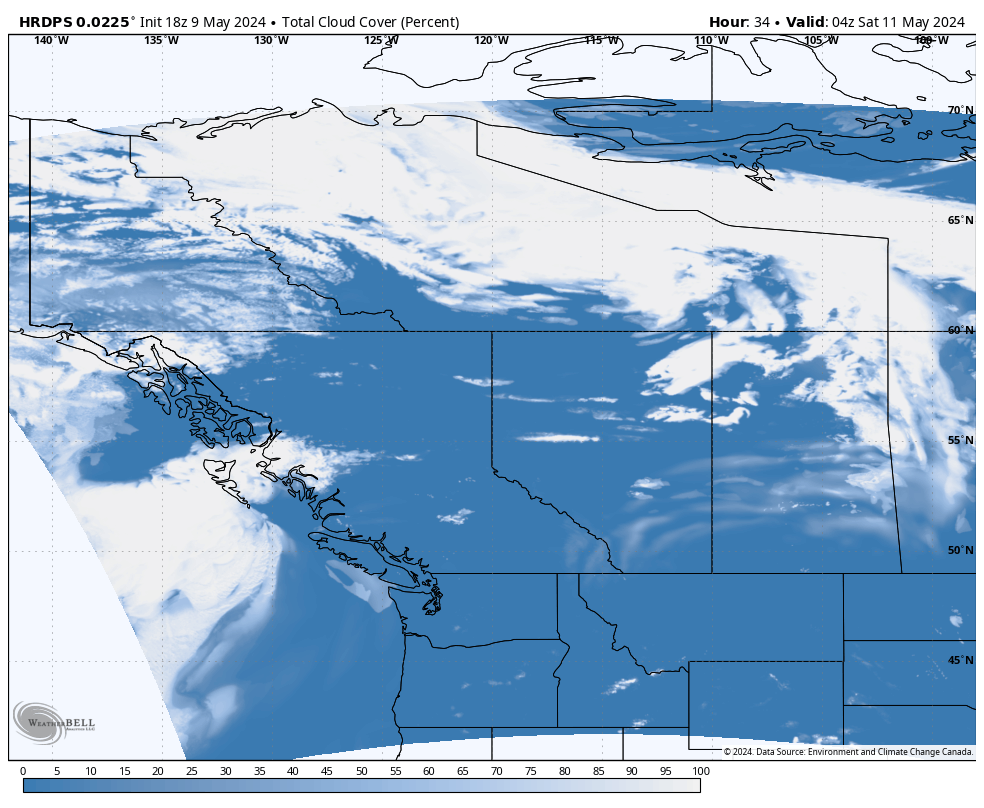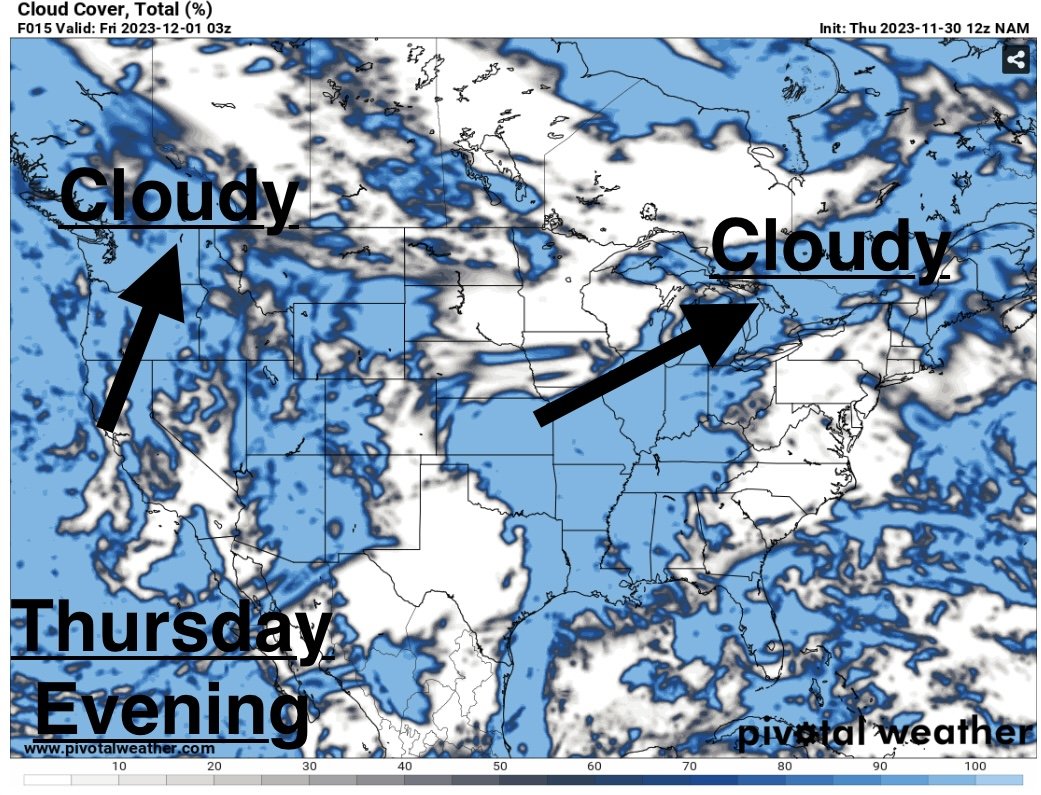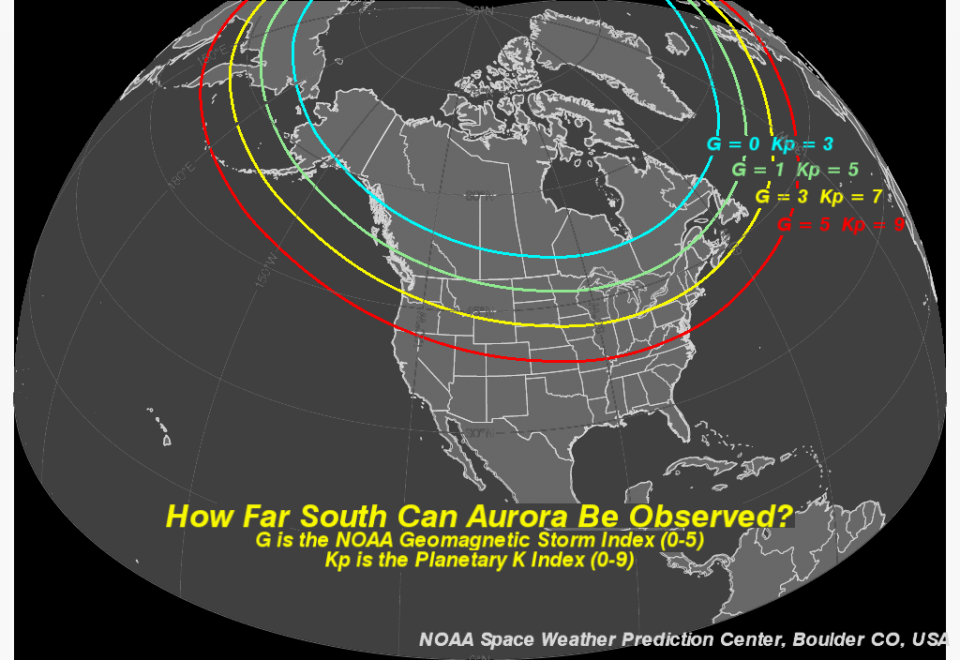Strongest Solar Storm in Years Could Spark Off Northern Lights Across Canada on Friday Night
/ESTIMATED AURORA VIEWLINE FOR FRIDAY NIGHT (SOURCE: SPACE WEATHER PREDICTION CENTER)
While the weather on Earth has been fairly quiet over the past week across Canada, the same can't be said for the weather in space, as the sun has been quite active. A cluster of sunspots has grown in recent days, leading to several strong solar flares directed towards Earth.
These solar flares are currently heading toward Earth and are forecasted to cause a severe solar storm. This solar storm could result in the Aurora Borealis being visible across Canada on Friday night, including in more southern latitudes that don't regularly experience the light show.
Do you still have your solar eclipse glasses? Well, go grab them! A sunspot has grown so large that it’s currently visible to the naked eye (while wearing eclipse glasses) without magnification.
— Instant Weather Ontario ⚡️ (@IWeatherON) May 9, 2024
If you look closely at the bottom right quadrant of the sun, you can see a small… pic.twitter.com/gNX6O6xCz7
This main cluster is so large that it’s comparable in size to the one that eventually led to the strongest solar storm in history, known as the ‘Carrington Event’ in 1859. It’s also visible to the naked eye (while wearing eclipse glasses) without magnification!
However, as spaceweather.com mentions; “CMEs currently en route to Earth will not cause a new Carrington Event; they are puny compared to the CMEs of 1859. Nevertheless, it would be wise to keep an eye on this growing active region while Earth is in its strike zone.”
This sunspot activity over the last few days has led to several coronal mass ejections (CMEs) directed toward Earth, expected to lead to a severe solar storm over the weekend. Current indications suggest that the CMEs will arrive sometime late Friday, with solar storm conditions continuing throughout the overnight into pre-dawn on Saturday.
A G4 (Severe) Geomagnetic Watch has been issued for May 11... pic.twitter.com/CeEHWEUFiQ
— NOAA Space Weather Prediction Center (@NWSSWPC) May 9, 2024
Based on the latest data, the Space Weather Prediction Center (SWPC) has issued a rare G4 (severe) Geomagnetic Watch for Friday night. They are currently forecasting a Kp index of 8.33 at the height of the event around midnight, which is quite high considering the scale only goes to 9!
Generally, the Kp index needs to be around 5 for the northern lights to be visible in the more northern latitudes of Canada, including the Prairies, Northern Ontario, and Quebec. While those further south in Southern Ontario require a Kp index of 6-7 for the aurora to be visible.
With a Kp index of 8.33, this will be more than sufficient and could even lead to the aurora being visible overhead instead of just along the horizon, which is what those in the southern latitudes typically experience.
Keep in mind, that this is just a rough projection, and predicting the arrival of CMEs isn't a perfect science, so it may arrive earlier or later, which would affect the potential visibility of the northern lights. It’s a good idea to be prepared for the light show, but know that it may change by Friday night once the solar storm begins.
Large sunspot groups and strong solar flares led to the issuance of SWPC's first G4 Watch since 2005... pic.twitter.com/oi55cTPXhP
— NOAA Space Weather Prediction Center (@NWSSWPC) May 9, 2024
While we have had multiple strong (G3) and severe (G4) solar storms in recent years, this is the first time that the SWPC has issued a G4 watch since 2005. At least five CMEs are currently directed toward Earth, which, as the SWPC mentions, is a very unusual occurrence.
The last severe solar storm occurred a few months ago in March. However, it arrived earlier than expected, with the northern lights being visible in lower latitudes across Europe. However, it fizzled out before nightfall in North America, ruining the chance for a show across Canada.
IMAGE FROM WeatherBell
Having clear skies will be critical for catching the show on Friday night, and the current forecast is looking quite good for much of Canada for Friday night.
Weather Conditions by Province for Friday Night:
Newfoundland: Some cloudy conditions on the east end towards St. Johns with clear skies expected through the western part of the island.
Maritimes: Mostly cloudy across Nova Scotia, Prince Edward Island, and Southern New Brunswick. Clear skies further north through Central New Brunswick, however, may see some building cloud cover along the Quebec border.
Quebec: Mostly clear across the province, however, there might be some patches of clouds closer to the border with Ontario into Northern Quebec.
Southern Ontario: Clear skies for Southwestern Ontario and most of the Golden Horseshoe. Lingering clouds may partially obscure the show in parts of Central and Eastern Ontario, although models do indicate that there will be breaks in the cloud cover.
Northern Ontario: Poor viewing conditions are expected through Northeastern Ontario as clouds will be present for much of the night. Conditions will improve further to the west where clearer skies are expected along the Manitoba border.
IMAGE FROM WeatherBell
Manitoba: Clear skies for the southern part of the province with increasing cloudiness further to the north across the Interlake region and into Northern Manitoba.
Saskatchewan: Some cloudy patches across the central part of the province and some thicker clouds to the north. Mostly clear for Southern Saskatchewan.
Alberta: Mostly clear with some thin cloud cover possible in the southern portion of the province.
British Columbia: Mostly clear.
Pinpointing the optimal time to witness the show is a challenge, dependent on the solar storm's evolution. Current estimates suggest the peak conditions sometime Friday and peaking around midnight. It’s important to stay updated with the latest information to know when the show has started and if there are any changes in the timeframe.
For the best chance at catching the northern lights, be sure to choose a location away from urban centers, where light pollution could dim the brilliance of the Northern Lights.








